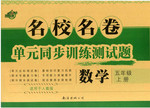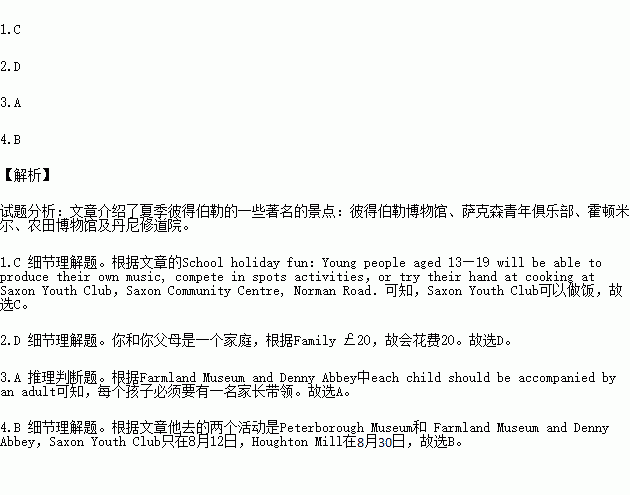题目内容
Summer Holiday Fun 2014!
The summer holidays are upon us again. Here is our guide to summer holiday fun in Peterborough!
Peterborough Museum
The Age of the Dinosaurs’ is the museum’s main attraction this summer. Get up close to prehistoric creatures via some great hands—on exhibits! Watch out for monsters lurking around every ember! The museum is open from 10:00am to 5:00pm Monday to Saturday, and from 12:00pm to 4:00pm on Sundays in August.
Call 01733 864663 for details
Saxon Youth Club
School holiday fun:Young people aged 13—19 will be able to produce their own music, compete in spots activities, or try their hand at cooking at Saxon Youth Club, Saxon Community Centre, Norman Road. Peterborough every Monday and Wednesday from 3:00pm.PLUS an aero ball tournament will take place on Thursday 12th August between 3:30pm and 6:30pm.
Call 01 353 720274 for details
Houghton Mill
The new play Alice through the Looking Class — a new production of the family favorite on Monday 30th August. Bring rugs or chairs to sit on and a picnic if you wish to eat during the play. Gates open 5:30pm, performance 6:30pm—8:30pm. Tea room will be open until end of the interval. Adult £10.Child £7.Family £20.
Booking advisable on 0845 4505157.
Farmland Museum and Denny Abbey
Farmland Gaines:From Wellie Wanging to Pretend Ploughing matches, come and join the Farmland Team.Collect your sporting stickers and create a colorful rosette that is fit for a winner!No need to book, just turn up between 12:00pm and 4:00pm on Thursday 19th August Suitable for children aged four and above, each child should be accompanied by an adult and all activities are included in the normal admission price Tickets Cost£7 per child.
For further information, call 01223 810080.
1.If you are interested in cooking, you can go to ________.
A. Peterborough MuseumB. Houghton Mill
C. Saxon Youth ClubD. Farmland Museum
2.You want to watch the new play Alice through the Looking Class with your parents, so it will cost you ________.
A.£7B.£17C.£27D.£20
3.Which of the following activities needs parents’company?
A. Playing farmland games.
B. Watching a new play.
C. Competing in spots activities.
D. Visiting the dinosaur exhibition.
4.If Tom comes to Peterborough for amusement on August 19, he will have ________ activity(activities) to choose from for himself.
A. oneB. twoC. threeD. four
 名校名卷单元同步训练测试题系列答案
名校名卷单元同步训练测试题系列答案书面表达
假设你班最近举行了一次班会,讨论怎样使英语学习变成一件快乐的事。请你根据下表所提示的信息,为某英语网站写一篇短文,谈谈你们的讨论情况并提出你的建议。
讨论情况 | 1.课内互动(讨论,采访,讲故事等) |
2.课外活动(演讲或晚会等) | |
3. 运用英语(口头或书面交流) | |
…….. | |
你的建议 |
注意:
1. 对所给要点注意陈述,不要简单翻译。
2. 词数110左右。开头已经写好,不计入总词数。
3. 参考词汇:have interactive activities 进行互动活动
Recently, we had a discussion on how to make learning English relaxing and fun.
_______________________________________________________________________________
_______________________________________________________________________________
_______________________________________________________________________________
_______________________________________________________________________________
_______________________________________________________________________________
_______________________________________________________________________________
_______________________________________________________________________________
_______________________________________________________________________________
_______________________________________________________________________________
_______________________________________________________________________________

